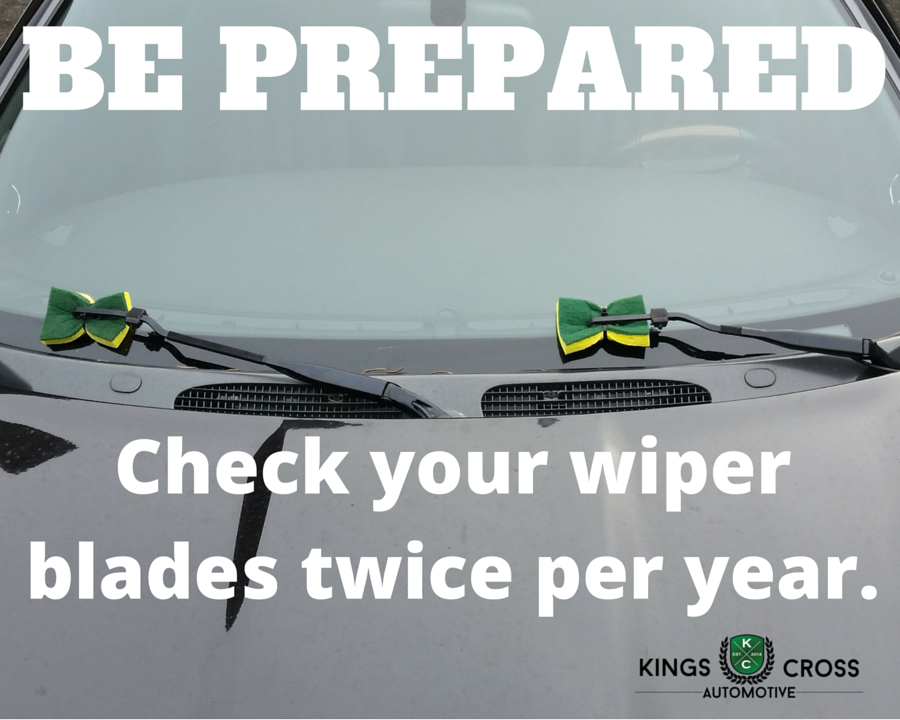 Windshield wipers endure a lot of abuse throughout the year. They work hard to remove rain, dirt, snow (and sometimes even ice) during winter, and at the peak of summer they withstand high temperatures and excessively dry conditions.
Windshield wipers endure a lot of abuse throughout the year. They work hard to remove rain, dirt, snow (and sometimes even ice) during winter, and at the peak of summer they withstand high temperatures and excessively dry conditions.
Worn out wipers become a safety issue and can reduce driving visibility. It is recommended that they be inspected twice per year and replaced as soon as they show signs of wear.
With the rainy months approaching, now is the perfect time to give your wipers a quick inspection.
How to Inspect Your Wiper Blades
Tip: Be sure to use adequate wiper fluid when inspecting your wiper blades.
-
From inside the vehicle:
-
Look for streaks or smears on your windshield.
-
Listen for screeching, scraping, or chatter.
-
-
From outside the vehicle:
-
Gently pull back the wiper arm and check the rubber blade for any visible tears or cracks. The blade edge should not be dull or worn.
-
Check the flexibility of the rubber blade. Aged blades may be less flexible and have difficulty conforming to the shape of the windshield.
-
Check the metal arm to ensure it is not bent or cracked.
-
Tip: Don’t forget to check the rear wiper on your SUV, minivan, or hatchback.
Prolonging the Life of Your Wiper Blades
At the push of a button, your windshield wipers work diligently (sometimes for hours at a time) to keep your view of the road clear. Here are some tips to make their job a little easier and prolong their life:
-
Clean your windshield regularly. Doing this at each gas tank fill-up is a great way to remember.
-
Gently wipe down the rubber blades with a damp cloth every few weeks to remove built-up grime and dirt.
-
Repair windshield chips and cracks promptly to reduce the chance of the wiper blades snagging and tearing.
-
Always properly de-ice your windshield before running you wiper blades.
